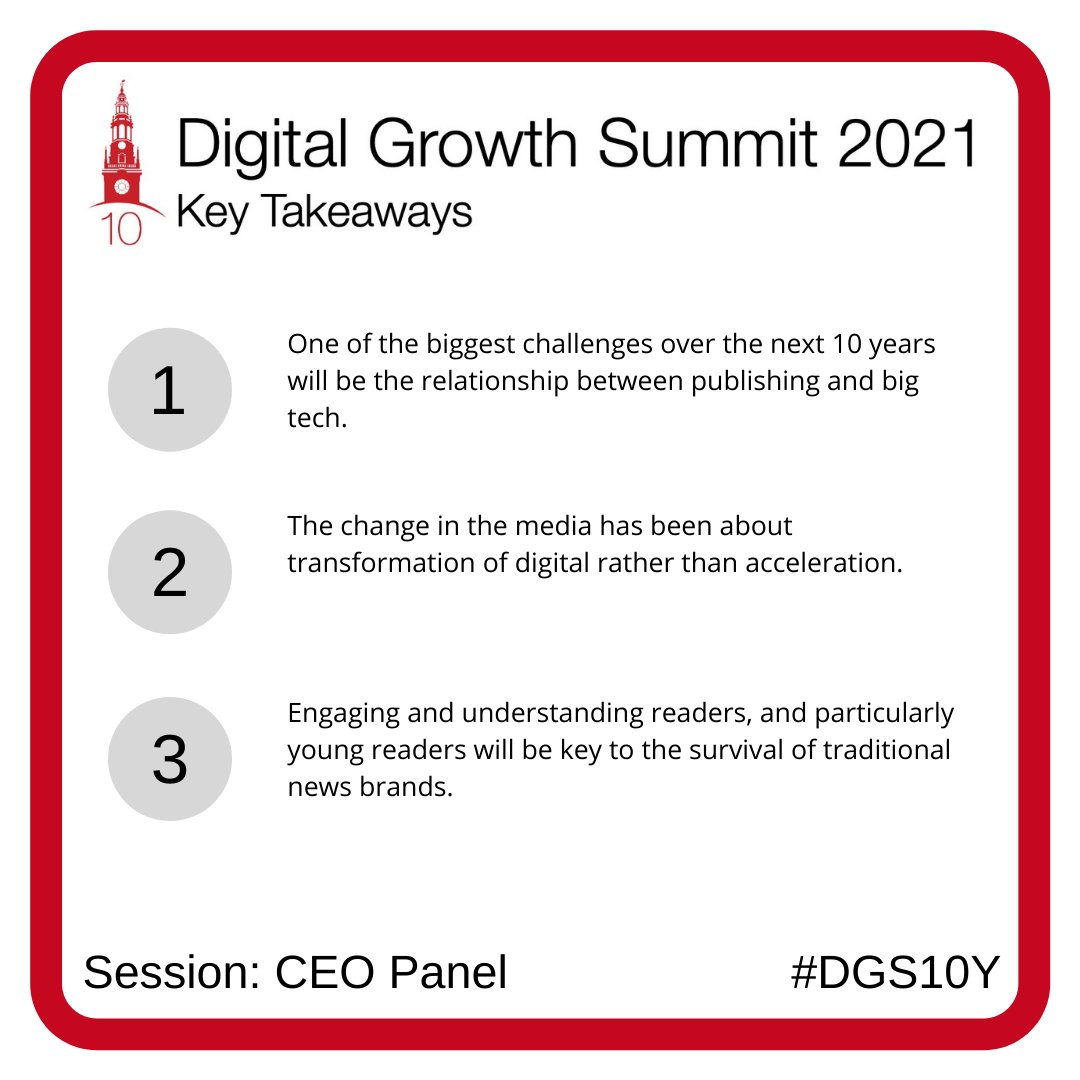|
Getting your Trinity Audio player ready...
|
The Next 10 Years in News: Insights from the Digital Growth Summit 2021
Forecasts, especially those looking relatively far head, are a risky game. It’s easy to underestimate the power of incremental change. Moreover, technological progress – and its interaction with consumption preferences – is anything but predictable.
Nonetheless, for publishers who are too often lost in the day-to-day, looking into the future is a healthy exercise. Speaking at the “Twipe Digital Growth Summit 2021: The Next 10 Years in News” publishers from around the world tried to predict how they would have to adapt to the new reality. Here’s 5 ideas to guide enterprising media managers.

1. Media need to provide real utility
The idea that media have to be useful for their audiences isn’t exactly ground-breaking. What has changed are implications of what that means – and what publishers have to do to be useful.
On the one hand, the argument can be made that media need to do much better at providing practical information, especially in a local context. (Check out this piece by Olaf Deininger on the systemic failure of local papers for some examples).
But that might no longer be enough. Media need to find a way to make themselves relevant to users on a daily basis, argues Gert Ysebaert, CEO of Belgian publishing house Mediahuis. “We have to be one of the top 5 applications people use daily, and one of 3 they are ready to pay for”, he notes.
Let’s start with daily utility. Here media companies can take a page from other industries, including banks. Take KBC, a Belgian bank with an exceptionally strong brand. After finding that their app was was a top converting product, they bought the rights to broadcast Belgian soccer highlights, especially goals, via the app. Russia’s Sberbank offers users business classes and online cinema, among others (it is also expanding into gaming).
This is tangible, and perhaps more importantly, habit-forming utility. Apps become a part of audiences’ daily lives, demonstrate utility and build enduring relationships.
Media analyst Thomas Baekdal pushes this line of thinking even further regarding the content itself. According to him, a large part of future media content will need to fall into one of three categories in order to provide real utility: solutions journalism, entrepreneurial journalism, and project journalism.
First, solutions journalism, focuses on providing answers and solving a specific problem (e.g., how to address a local environmental challenge, say contamination of a river). Entrepreneurial journalism is about providing people with the tools they need – in many ways it’s about creating a product that solves a community’s pain points, or helps boost their gains. Finally, project journalism is a form of solutions journalism aimed at both getting people to a goal and aligning them along the way.
If you can both deliver value, as in the models above, and do so with regularity (becoming a regular part of audiences’ lives) chances your organization will make it to 2031 are strong indeed.

2. Data labelling – the next, big step forward
Data is part of the DNA of media (or at least it should be). Building a successful website requires constant monitoring of dozens of indicators. Similarly, the advertising business is extremely data-driven (in fact, that’s why much of it has left media and gone to platforms).
However, there is so much more to be done. One of the big challenges to overcome is that of data labelling, argues Peter Soetens, chief digital officer of publishing house Mediahuis.
Data labelling is the process of adding descriptive tags to files that give more context (e.g., an image of a party with a meta description that includes the tags “festive” or “cheerful”).
This tends to be quite labour-intensive work, but the results are worth it. The recommendation algorithms of Spotify or Netflix – which keep us stuck in the app for hours – are based on extensive data labelling. If we tend to watch dark, humorous films in the evenings, but light rom-coms in the first half of the day, that’s what we will keep getting.
The idea is to bring the same approach to media, Soetens believes. This would provide better recommendations to users. “We could say, for example, that this article pairs well with a good wine”, Soetens jokes.
This also enables machine learning to understand and predict consumer behaviour. Unlike humans, whose minds attach deep context to everything they see, machines can only compute identifiable data. The richness of labelled data thus allows them to undertake sophisticated analyses. In turn, this will mean a better, more personalized consumer experience.
3. Be ready for fast bundling and unbundling
“News is now a standalone product” argues media analyst Thomas Baekdal. Previously newspapers offered a complex bundle – classifieds, crosswords, advertising, community organization… Most are now separate businesses (e.g., classifieds went to Craiglist-type sites, then to various marketplaces). As a result, media are left with the challenge of monetizing news content by itself.
In fact, the situation is a bit more complex. It is not just “news” that has been unbundled from, say, classifieds. Different formats are also subject to the same bundling-unbundling forces. Take email over the past few years – many writers have left publications to launch newsletters.
But the tide of history is not one of unbundling ad infinitum. Rather, changes in technology or consumption habits result in bundling-unbundling episodes.
Affiliate marketing and product placement are two examples of monetization that can make sense when bundled with content. (Although they present some ethical challenges, especially if you review a product you’re also selling). In the future, local media sites could also be a platform to manage your utilities.
These potential bundling/ unbundling opportunities will come and go. In fact, the speed of change is likely to increase. Hence, more than focusing on any specific product, publishers need to be able to react with speed and purpose – quickly recognizing which pieces to bundling/ unbundle and adjusting their value proposition accordingly.

4. Spend more money on marketing understanding and reaching your audience
“We need to understand what users really want”; “we need to convince people to support us”; “we need to become part of the local identify”.
It is great to hear publisher discussions focus on their users. What is more surprising, is what they often don’t mention: marketing. Marketing is a dirty word for many media folk. While “journalism” is a noble, almost spiritual occupation, “marketing” is its base, materialistic equivalent.
Others argue that marketing is not needed. Everyone now and then you will hear something along the lines: “if you have a bunch of popular channels, why do you need marketing?”
The results of such an approach are pretty obvious. Trust in media is falling by double-digit margins. – journalists recently ranked as the 4th least-trusted profession in the UK, between estate agents and government ministers. In many countries banks have a better reputation than media.
Comparing marketing expenditures suggests a simple explanation. A 2020 CMO survey by Deloitte, a professional services firm, found that B2C industries spend 13.9-15% of revenues on marketing; in media this figure is often in the low single digits.
The rise of reader revenue is remedying this discrepancy – a pretty simple funnel connects promotion/ outreach and paying subscribers. In practice, this is forcing media to be more attuned to the needs of their audiences.
Over the next 10 years media need to go much further – running more conjoint analyses to understand actual value and price points, running digital ads, strengthening their brand, and building real relations with users. Even if they don’t call it “marketing”.

5. Want to understand young audiences – start by hiring them
The latest Reuters Institute report shows that the typical paying media subscriber is already in their 50s. Part of the reason is that the value of news increases with age. While a student may value quality news, actually paying, say, $10 a month is rather unappealing when compared to alternatives (e.g., eating a decent meal or having a few drinks on “student’s night”).
This supposedly flips at some point after people reach their 40s. But the dearth of young subscribers nonetheless represents a huge problem for publishers. If you want young people to some day buy your publication, they first need to know it exists. That already isn’t the case.
Social media is now the main source of news for young people (a contentious term, let’s say below 35). If you want to start building relationships with the subscribers of tomorrow, that’s where you would go and find them.
To be fair, many media are already doing this. The Economist has been investing in its Instagram, which has more than 5.6 million followers – 2/3 of whom are aged 18-24. As the media’s head of audience Kevin Young puts it, that’s over 3 million young people who already have a relationship with The Economist.
To succeed over the next 10 years, however, publishers will need to do more than go on Instagram. After all, the platform could be out of style in just a few years – or even next week.
To make sure media keep up they need to listen to the young voices in their newsroom. That starts with making sure such voices are actually there and ends with actually listening to them. Many publishers are failing on both fronts.
While gender and racial diversity is rightly the subject of many surveys, age diversity is often overlooked. Moreover, even if young people were hired, they are rarely able to make themselves heard. Anecdotal evidence shows that this is a problem especially for fast-greying Europe.
Meanwhile, not content to wait, they are opening their own outlets, further endangering the future of today’s publishers.
This piece was originally published in The Fix and is re-published with permission. The Fix is a solutions-oriented publication focusing on the European media scene. Subscribe to its weekly newsletter here.


